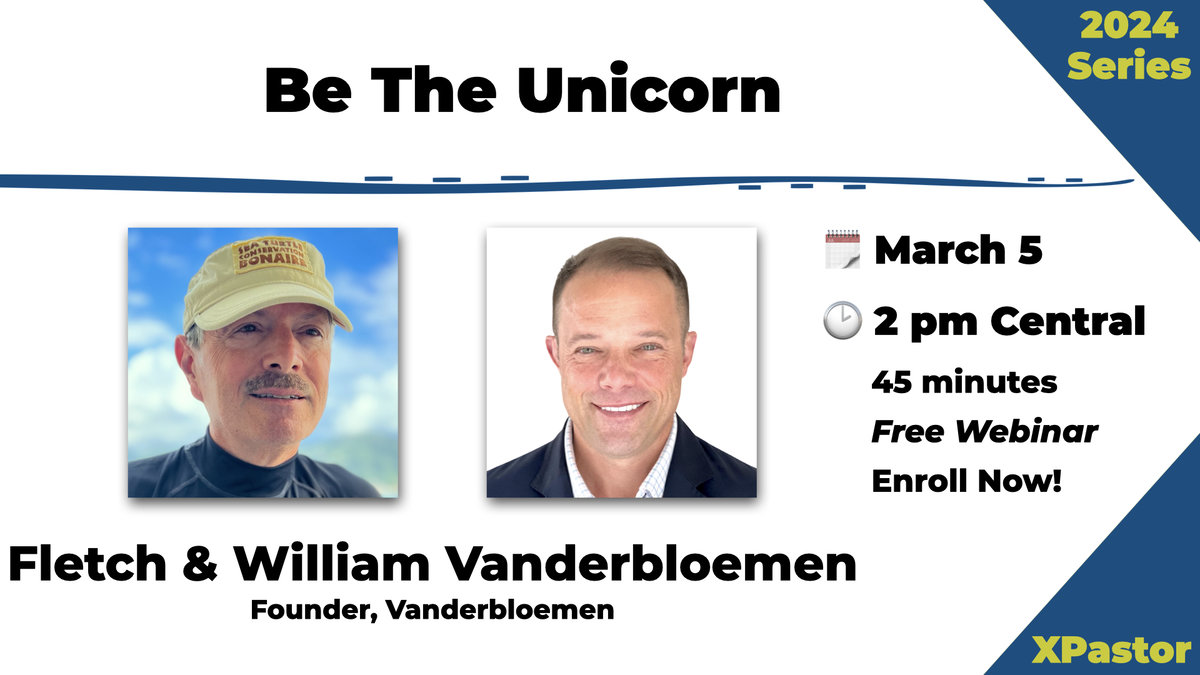What would you say your most valuable asset is? For most leaders, the answer is (of course) their people. But as “twentysomethings” share the boardroom with Vietnam veterans, assumptions fly about what the other person really has to offer. And what flies isn’t always positive. Employees have to learn how to work together as a team with those they have nothing in common with. Employers have to learn how to incentivize and retain talent that has very different value systems. Both are significant challenges never before realized. The purpose of this article is to examine the five generations now alive and working in churches, companies, and organizations of all kinds, and to learn some simple steps to engage the generations that will likely be your next strategic asset.
“Back in the day,” differences like gender and ethnic origin were the big-ticket items that most Human Resource professionals developed diversity programs for. Even the government got into the act with legislation like Affirmative Action and Equal Employment Opportunity. In today’s people marketplace, however, age is the single-most significant diversity challenge around. There are an estimated 240 million workers in the U. S. economy today, ranging from just beginning to drive a car, to card-carrying AARP members. The U.S. Census Bureau categorizes workers from ages 17 to 55 years in five categories and estimates the number in the workforce, represented in the figure below.
Age Categories (as of 2007) |
||
| Centurions | 55+ years of age | 50 million |
| Baby Boomers | 38-55 years of age | 60 million |
| Generation X | 28-38 years of age | 40 million |
| Generation Y | 21-28 years of age | 30+ million |
| MTV | 17-21 years of age | 60 million |
Centurions: “Mine is not to question why. Mine is but to do or die.”
There are currently 50 million American workers today that are over the age of 55. These are the folks who have seen the most war and have been responsible to draw the economy back up following that desolation. They are “pre-Dr. Spock” kids that understand what it meant to go behind the wood shed. They are restrained and polite, respect courtesy and good manners, and expect the same in return. Centurions want to find a good organization and stay there, frequently taking on the identity of the organization. They are loyal and believe the organization will always be there to take care of them.
Centurions are conservative, structured workers who take a traditional view of the workplace. They require well-defined roles and responsibilities and are less comfortable crossing positional lines. Centurions were raised on pencil and paper and many need to touch the product to sell it. Born to parents from the Second World War, they are thrifty and hard working, dedicated to the very end. They will do a job until it’s done and not question authority. Centurions would prefer to do business with a handshake. Their priorities are to secure a living and enjoying a job is secondary to that.
Be thoughtful in your constructive feedback to Centurions. They take comments to heart, remember what is said to them, and can become easily discouraged. Performance appraisals should contain well-thought out improvement opportunities, and if technology skills require improvement, be prepared to offer training.
As the Centurion generation begins to retire in mass, retirement plans squeak under the weight. Responding to the cost pressure, many organizations have changed their retirement offerings from traditionally-defined benefit plans to defined contribution plans in order to mitigate the liability. Unfortunately, many very loyal Centurions have counted on the organization to take care of them and have not aggressively invested in their retirement. When retirement offerings change, Centurions feel abandoned and may become disillusioned.
Baby Boomers: “Health-Obsessed Workout Fanatics Who Know Their Antioxidants From Their Trans Fats And Look Ten Years Younger Than Their Age”1
Sixty million workers between the ages of 38 and 55 in one market place—roughly thirty percent of the American workforce—Baby Boomers are a formidable power. Baby Boomers are cultural icons, a highly educated group that get a lot of attention. They are extremely driven with many working two jobs to take care of parents and kids. They have a huge capacity and are stressed, with some thriving on that stress and others crumbling beneath it.
Unlike the previous generation, Baby Boomers question everything. If they don’t know why they’re doing something, they won’t do it. They need to see the destination first, and then want you to get out of the way and let them develop a plan to get there. Baby Boomers tend to collaborate easily, and question leadership technique even more easily. They facilitated the computer revolution—making millions at it—and readily integrate technology and change in their lives. These are the folks who have made PowerPoint presentations an art form. They are demanding but polite and believe the world is theirs for the taking. They are extremely adaptable.
Baby Boomers want an agreement in writing, and voluminous writing is okay with them. They are less loyal to one organization than Centurions are and can be lured away by higher compensation. They see recognition as a paycheck. Baby Boomers can handle difficult feedback but be prepared for them to question it. It should be well documented and “water-tight” for the most effective response.
Despite the healthy reputation, evidence suggests Baby Boomers may be less healthy than Centurions were in the same age group, reporting higher incidents of chronic problems such as obesity, high cholesterol, blood pressure and diabetes. These facts have driven the cost of health care sky high and employers are forced to react by either reducing plan offerings or increasing employee contributions. Normally, Baby Boomers take it in stride because they expect the world to change in front of them.
Generation X and Y: “The Über-Praised Generations”2
There are 70+ million workers between the ages of 21 and 38 in America, larger in force than the bubble of Baby Boomers that have received so much attention. These are the workers that will form the future of an organization, so it is very important to understand their motivational factors.
Generation Xers and Yers were raised on a culture of praise. Their parents saw their jobs as building self-esteem, teaching them they could do anything if they believed in themselves. “Gifted” is a frequently used term. Soccer coaches gave every person on the team a trophy, even if they didn’t score a goal. Schools name forty “students of the month.” Childhood has been defined by this culture and it reaches deeply into the workplace.
Because of the culture of praise, Generation Xers and Yers are very confident. They expect to be asked their opinions and to be taken seriously, regardless of their personal expression demonstrated in body piercings, creative clothing, big hair, and tattoos. They also take things more at face value than Baby Boomers do. They are techy. They think big—the sky is the limit. And they get bored easily, especially if they’re not involved. They want to take risks, but don’t always understand the depth of failure since many parents have softened the blows throughout their lives.
Generation Xers and Yers want to like their jobs. Unlike Centurions and Boomers whose primary motivation was earning a living, this generation likes to party and they come to work to socialize. Generation Xers and Yers seek instant gratification coupled with big expectations. They want to be continuously rewarded—even for short cuts—and feel they are spinning their wheels if they are not regularly promoted. They want to move fluidly through the organization, with short dynamic assignments that can be completed in six months.
Recognition for this age group requires focusing on their loyalty-building hot buttons—like appreciation and fun activities. They need praise and near-constant feedback, including frequent performance evaluations. When they don’t get feedback, it makes them nervous. Constructive criticism for this group should be specifically on what actions to do differently, not on personal characteristics.
An interesting characteristic of this age group is their propensity to leave jobs—even well-paying jobs—with little notice and even less guilt, some having eight different jobs prior to leaving the age group. One Fortune 500 organization documented a fifty percent turnover within three years of these young professionals. So why is there such a drastic contrast from Centurions and Baby Boomers?
First of all, remember Generation Xers and Yers are typically very confident. Second, this generation watched helplessly as their grandparents, parents, and neighbors were laid-off, had their pensions mismanaged, healthcare benefits shriveled, and as profitable businesses like dotcoms implode. As a result, they have never believed they could work for one organization their entire lives. They’ve never known anything but a robust economy and feel they can always get a job—worst case is that they can live with Mom.3 Those two concepts together cause this age group to change jobs much more readily than the previous two age groups.
MTV: The Millennium Generation4
Sixty million individuals in today’s workforce grew up in a child-focused world. They have always had pin numbers and made their purchases through scanners. Paper and pencil are cumbersome to them. They do not remember much about life before online. Google has always been a verb. Laptops have always fit into backpacks. “Tab” is the heading on a computer file and not a diet drink. They have very short attention spans and are technologically dependent.
They see very little of value in pomp and circumstance, business suits, punching a time clock, formalities, and chains of command. They don’t make assumptions of what has to be done. If you don’t tell an MTVer to do something, they won’t do it. The generation values higher social consciousness and wants to solve problems intellectually, which conflicts with Centurions who believe you have to first work in a problem to solve it.
This generation is eager to prove themselves and began making lists of goals and activities beginning in elementary school. Although there is a positive aspect to goal-setting, the MTV Generation can also become restless more quickly and move on the next thing on the list. They need a collaborative, encouraging, and rewarding work environment to remain engaged. The challenge is to emotionally connect the MTV Generation to the higher level of the organization’s mission.
MTVers work well in teams and have a healthy respect for diversity because they can appreciate a wide range of perspectives. They have little long-term loyalty to any music or artist or style and tend to feel the same way about the companies they work for everyday. They value creative titles but want their titles to reflect what they’re doing on the job.
This generation was raised by “helicopter parents” who hovered around their kids and gave them constant feedback and support so employers must give ongoing constructive feedback. If three weeks go by and they haven’t heard from you, they will assume something is wrong.
So How Is This A Strategic Asset?
First of all, the generational challenge isn’t going to go away. In roughly seventeen years, Generations X, Y, and MTV will control the boardroom. The critical step is learning how to appreciate the differences that each age group brings to the table. Learning what makes each age group tick is the first step in appreciating the differences.
The second step is to keep the age groups engaged in the business. A recent Gallop survey revealed that 56 percent of workers are not engaged in their business. An additional 15 percent were actively disengaged in their business. That’s 71 percent of the workforce working against the business! Imagine the asset of engaging and motivating those employees! But how do you do it? Find the hot-buttons that build loyalty. Here are some simple things to consider when engaging employees.5
Feedback
For Centurions and Boomers, feedback should be brief and to the point, and not overly praiseful. This group feels most recognized with a paycheck. For the others, however, a different approach is necessary. Consider providing positive feedback systems (top down) on a defined frequency schedule team leaders will both anticipate and look forward to. For example, corporations including Land’s End and Bank of America hire consultants to teach managers how to compliment employees using email, prize packages, and public displays of appreciation. The Container Store Inc. estimates that one of its 4,000 employees receives praise every twenty seconds through such efforts as its “Celebration Voice Mailboxes.”6
Social
For all age groups, schedule social events to bond talent and teams outside business context. Be mindful of age-related physical differences. Also, Generations X, Y, and MTV want to socialize during work hours, so consider modified schedules to accommodate it.
Rewards Training
For Centurions and Boomers, a well-defined job that provides security is key. Ask them to document historical trends and events in the life of the business for future training. Provide meaningful opportunities to leave a legacy. For Generations X, Y, and MTV, consider having performance tools where team leaders reaching various performance levels can win rewards to attend leading performance training retreats. Separate the worthy from the needy by offering extra projects for those with ambition. At one engineering organization, a new hire asked to complete a government RFP to gain experience. The 24-year-old ended up winning the contract—the largest in her organization’s history.
Reinforce the Organization’s Values Creatively
Centurions and Boomers identify with what the organization stands for and it increases with longevity. Generations X, Y, and MTV employees want to make the organization their own, on their own terms. Here’s an example of how one organization helped reinforce their values among employees. They organized a meeting and gave the employees a video camera and a mission: film an infomercial about the organization and its values. In less than an hour the employees worked together to produce a homemade infomercial. They made popcorn and watched it on a big screen TV. The infomercial was so entertaining and sincere that it became one of the organization’s sales tools.7
If you really believe that your success is your people, you must innovate new ways to engage and motivate employees of all age groups. You do so by understanding what makes them tick and then using that information to emotionally link them to your business outcomes. Such innovation isn’t easy, but it’s worth the effort.
Notes
- Stein, Rob. Washington Post, April 20, 2007.
- Wall Street Journal, “The Most Praised Generation Goes to Work,” April 20, 2007.
- Dorsey, Jason. “Retaining Young Professionals Without Paying Them More,” Professional Performance Magazine, Volume 15, Issue 1.
- Welch, Jim. “The Growth Leader, Growing Your Future Talent.”
- Dorhmann, Bernie. “Talent Retention.” The Performance Magazine, Volume 14, Issue 1
- Wall Street Journal. Ibid.
- Dorsey, Jason. Ibid.











